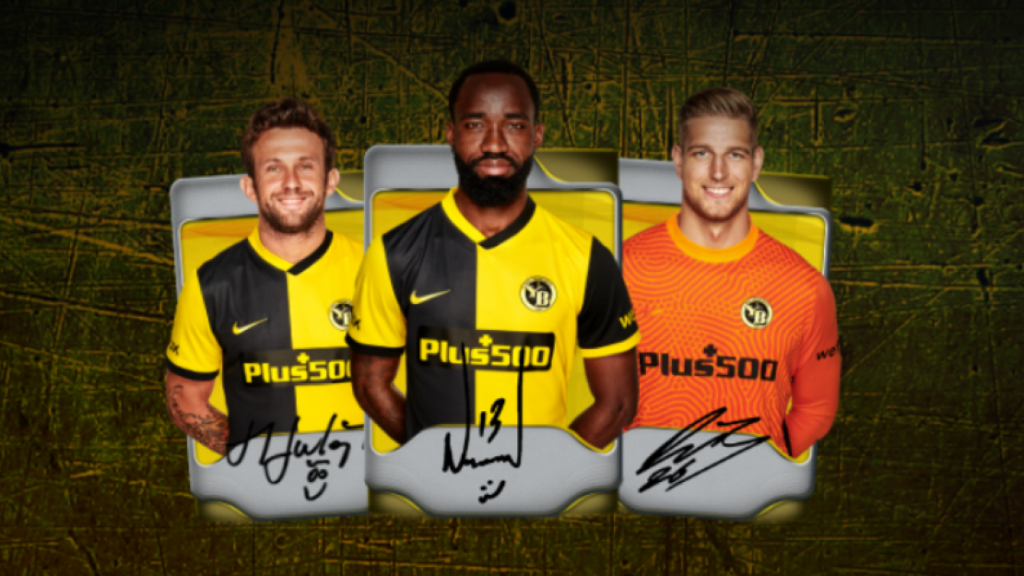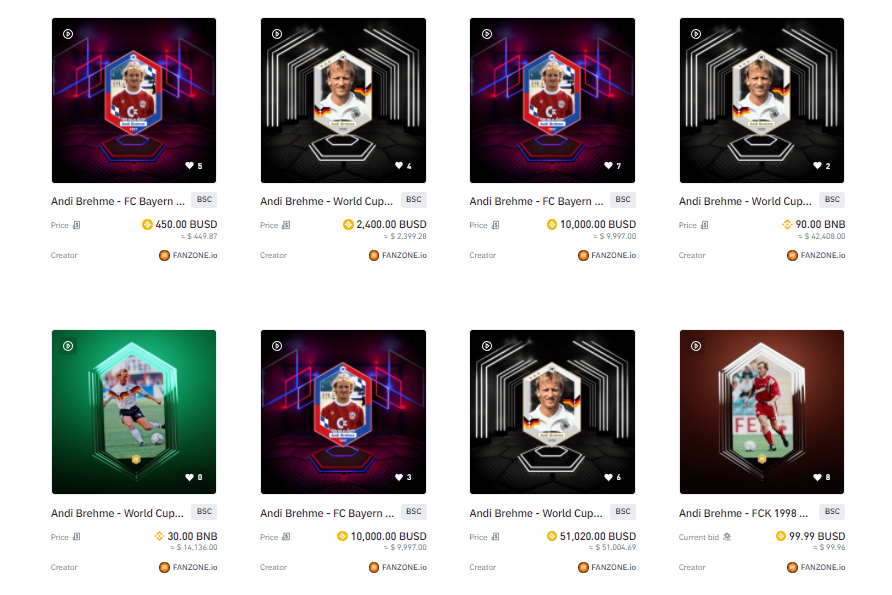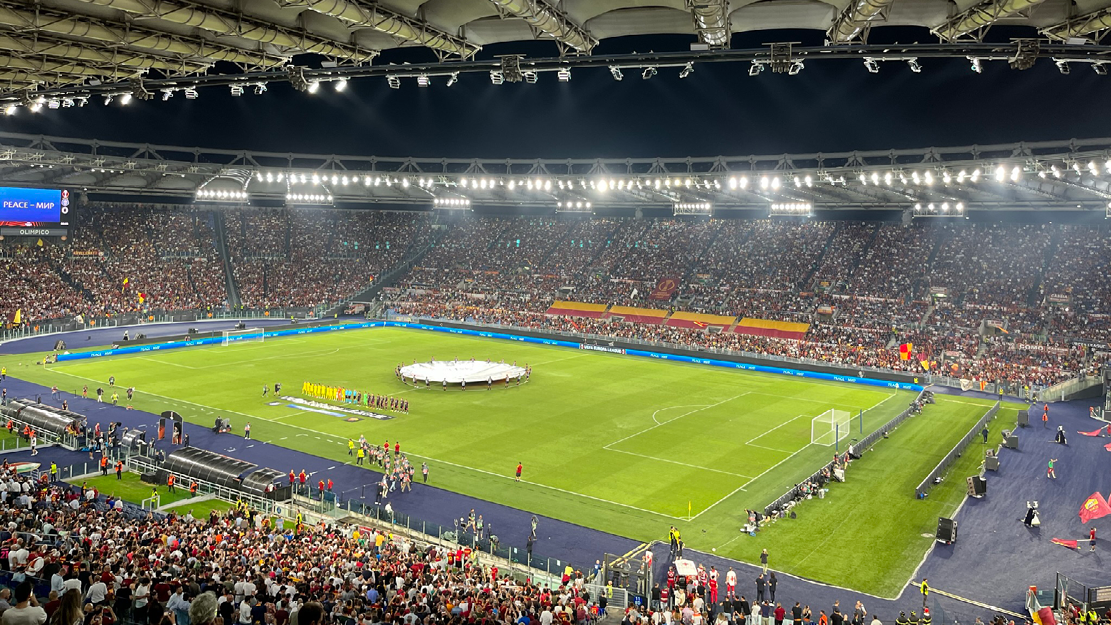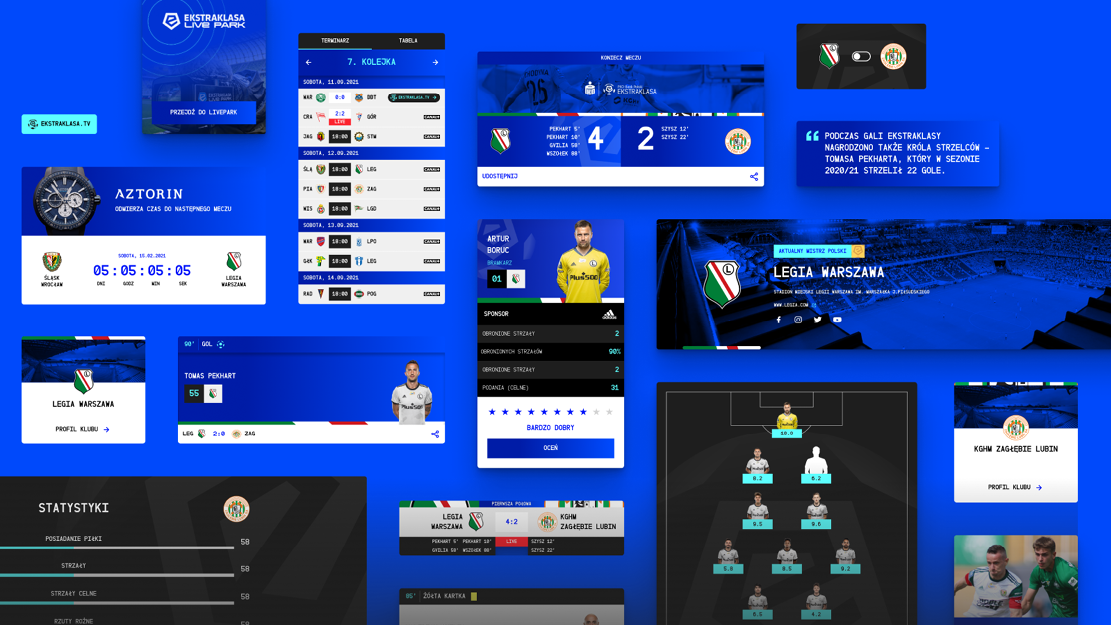After the hype about NFTs in the field of arts at the beginning of the year, the wave also spilled over to the sports sector in the USA and is now also taking off in European football. An NFT is the “digital certification” of an object or a picture. Similar to the land registry, where the ownership of a piece of land is registered, the entry of the ownership rights to an NFT is made in the blockchain.
A guest article by Andreas Schmidt, CEO of Megafanworld.
While many thought that NFTs were a temporary fad, an impressive second wave has started in the last few months. More and more celebrities and big brands are jumping on the bandwagon. The monthly sales volume has now reached dimensions in the billions. Even McDonald’s has launched an NFT collection on burgers. Adidas has also hit the gas in the NFT sector and launched 3D avatars. Within a few hours, the company raised $22 million with 30,000 NFTs. And last but not least, there is now also a German football world champion who has made it as an NFT to the world’s largest crypto exchange, Binance. Andreas Brehme, the world champion who scored the decisive penalty against Argentina in the legendary final of 1990 in the 85th minute, is now venturing onto the crypto market with the help of Fanzone.
Football clubs have the opportunity to tap into a completely new revenue stream that does not compete with other offerings. It is a new, important way to engage fans, especially with a younger target group.
NFTs – Digital trading cards
NFTs can be compared to the well-known trading cards: For example, the fan buys a pack of 5 cards and, when opening it, discovers which players are now in his possession. The exciting thing is which category each card belongs to. The concept of trading cards, which come in different levels of rarity, can be implemented quite easily with NFTs on the blockchain: Fanzone, which offers the digital trading cards for the German national team, among others, has 5 different rarity levels, for example: Onboarding (with a circulation of 25,000), Common (3000), Rare (1000), Epic (500) and Legendary (100).
If the fan buys a 5-pack of NFTs for 10 euros and catches a popular player in the Rare or Epic category, he can be sure that his collection is already worth considerably more than the purchase price for this first pack. Interesting are the additional Special Cards, which are released on particular occasions for individual selected players in an edition of usually max. 50. These can then be purchased directly from the online shop. When they are all sold, trading begins on the secondary market, and prices are usually around 100 euros. Initial experience shows that considerable increases in value are possible. A Special Edition Card of Kai Havertz has already changed hands for 1000 euros after the primary sale.
Fanzone APP
The Fanzone App, which provides access to the initial offer, has a very user-friendly design and is very easy to use. Upon registration, new fans immediately receive a free pack with 5 players from the onboarding category, which are available in higher editions but also have a small value. In the next step, the fan can then join, spend money and, for example, as a VfL Wolfsburg fan, purchase the Little Wolfs Pack with 5 cards for 7.99 euros. Die-hard fans can also buy the Warewolf Pack, but this costs 149.99 euros and includes “only 3” cards. However, the probability of getting a rare or super rare card is much higher. The value of these cards should continue to increase in the future.
Trading on the LUKSO Blockchain via the Fanzone app or marketplace should be able to start in Q2 2022. The LUKSO blockchain looks quite promising for NFT projects, so if there are any delays, that wouldn’t be a disaster. Fanzone could very quickly switch the NFTs to another blockchain such as Tezos, Flow, Polygon or Stellar without any problems. Fanzone charges 10% in trading fees, which is within reason, part of which also benefits the association. Fanzone has also launched the next level of innovation and now enables a penalty kick game. The fan can choose either a field player or goalkeeper. If you win a penalty shootout, you can win great digital prizes.
Sorare – the Formula 1 among providers: trading card NFTs and fantasy game
The first mover for digital football trading cards is Sorare from France, which already offers trading cards of the respective players from more than 150 clubs. Sorare has benefited in particular from the hype in the NFT market, which has driven the prices of various singles to astronomical heights. For example, there are individual Sorare Unique or Super Rare NFTs for which more than 50,000 euros have already been paid. Each new season, 1111 new cards are created per player, 1000 of them in the Limited class, 100 in the Rare class, 10 in the Super Rare class and one in the Unique class. The special feature of the Sorare trading cards is the possibility to put together a team of 5 players and compete against other teams in competitions. To start on Sorare, the fan can purchase cards of the players in various auctions or buy them from another fan via the transfer market. The concept is different from the original trading card idea and the surprise effect unfortunately does not come into play.
However, the number of fans who actually use the cards to participate in active play with a team is likely to be quite limited, since on the one hand the whole system is very complex and requires several hours of time per week, and on top of that an investment of several thousand euros is necessary to set up a reasonably competitive team. So, de facto, you have to follow the development of the players in real life in order to discover talents early on or also pay attention to which players are currently injured so that you don’t include them in the team. We wouldn’t be surprised if even clubs use the Sorare game to train their own scouting and coaching departments with it. A disadvantage for clubs is also that nothing is left over from the fees in the secondary market; the lion’s share goes for the extremely high gas fee at Ethereum.
Acceptance by fans and ticket trading
At Fanzone with currently 2 teams available, more than 25,000 fans are proud owners of at least one NFT collector’s card. Considering that Fanzone has only been active for a few months, a good number of fans have already been activated. At Sorare, the number of NFT owners is currently 19,367, but half of them are probably not football fans at all, but rather speculators and crypto investors who buy trading cards mainly with the intention of making a profit. A major factor in the sometimes erratic price explosions last year was certainly the tenfold increase in the cryptocurrency Ethereum, plus the fact that many NFT traders had made millions in profits with other NFTs such as CryptoPunks. Several times millions were paid for computer-generated pixel punks, which then naturally puts the top prices for individual top football NFTs into perspective.
However, it misses the real point, which is to offer fan products that are affordable for every fan. It is not about creating speculative objects so that speculators can make high profits. Moreover, if the euphoria cools down, the shot can also backfire. The UK Gambling Authority has already recognised that the Sorare scheme may be classed as a gambling or pyramid scheme, with significant risks to the consumer. An investigation is currently underway.
Very important factors for the future development of the value of trading cards are the blockchain and the transaction fees. The distribution of the blockchain is only important to a limited extent, as the fan buys the cards on the blockchain where his favourites are available.
With Sorare, the big problem is that the transactions run on the Ethereum Blockchain, where they currently amount to around 50 dollars. So for a buy and sell, that’s over $100. This is particularly relevant for the future development of the Limited Edition cards. The essential advantage of a blockchain transfer over a traditional physical trade is completely lost. Moreover, it is questionable whether in the future, as new cards come onto the market every year, the Limited cards will be able to hold their value at all, so that there will be anything left after a possible transaction.
The Young Boys from Bern have launched a very sustainable model that will possibly inspire the entire football industry to enter the NFT business. NFTs of the Young Boys stars can be purchased very easily and inexpensively via the in-house marketplace. Importantly, an electronic dollar is used as the main means of payment. This is known to fluctuate much less than cryptocurrencies and thus also keeps cryptospeculators away, which is entirely in the interest of the actual fans, for whom the NFTs are mainly intended. The Bernese want to make the know-how they have built up available to other clubs with a partner. Every club should listen to this.
“We started our NFT project with the primary goal of gaining experience and were very positively surprised. We will now continue with our blockchain strategy, launch a special NFT edition in Q1 and offer a full squad edition again in the summer. The important thing for us is to inspire our fans and not some crypto-nerds,” says Reto Steffen, CDO of BSC Young Boys.

Who else is competing in the market for football NFTs?
Topps NFTs (www.toppsnfts.com)
Just a few weeks ago, the DFL signed an official partnership with Topps. The “Bundesliga NFT Card Collection” by Topps features the best moments of the 2021/22 season on digital trading cards. Topps uses the Flow Blockchain, which has quickly overtaken the established Ethereum Blockchain, at least in the sports sector, due to its low transaction fees and speed. The fees in the secondary market including the royalty fee for the creator should be around 10%.
The system is similar to that of trading cards: 6,000 packs are offered at a price of 35 dollars, and the packs contain NFTs with different rarity levels from common to legendary. Especially in the USA, this type of video NFTs is very popular, especially in basketball. For a video NFT with a dunk by LeBron James, 200,000 dollars have been paid. However, it is not yet clear how the video sequences will be received as NFTs in Europe, since the interesting game scenes are usually available for free as short videos on YouTube.
Golden Goals (www.GoldenGoals.io)
A new NFT portal for football fans, Golden Goals from France, has been up and running for a few months. Three clubs from the French First Division are already partners there and offer NFTs diligently. The special thing about Golden Goals, however, is that fans can create their own NFTs and place them on the marketplace. Numerous artists are already at work with caricatures or small animated football sequences. The maximum edition of an NFT is currently limited to 10 copies at Golden Goals, which also ensures that there is always a limited supply.
At the moment, caricatures or fantasy pictures with Kylian Mbappé are in particularly high demand and are being traded diligently. Golden Goals uses the Tezos Blockchain, which has recently made a name for itself in the NFT sector. Among other things, Tezos was also a partner at Art Basel in Miami and is now attracting more and more attention in the art market. Tezos NFTs are also tradable via OpenSea, the most important NFT platform. One of the most prominent partners from the sports sector is the Red Bull Racing Team, which offers fan NFTs via Tezos and has even entered into a marketing cooperation with Tezos.
To be able to start on Golden Goals, you need a Tezos Wallet. This is easy to achieve, for example through the Temple Wallet, which can simply be installed as an add-on in the browser. With a key phrase, you have your key to access your wallet. Topping up the wallet with Tezos is also quite easy via the payment service provider Ramp, which provides an interface to credit card transactions or bank transactions. Once you have Tezos in your wallet, you can start on Golden Goals. The wallet is linked to the marketplace and you are ready to go. If one buys an NFT, it is then posted to the corresponding wallet on the blockchain – one has sole access and is the proud owner of an NFT. The fees for the secondary market are to be calculated at around 3 to 10 %, whereby this is divided into marketplace fees of 3 % and creator fees.
Independent NFT launch – Venly platform, Litemint and Flow
Venly and Polygon Blockchain (FC St. Pauli)
The first clubs have now entered the NFT market on their own. FC St. Pauli, for example, has started to launch the first matchday NFT. Venly is used as the marketplace. Venly offers the possibility to mine and trade NFTs on the Polygon Blockchain. The Polygon Blockchain is a “subdivision” of Ethereum and, at the moment anyway, enables much cheaper transactions than the Ethereum Blockchain. In mid-October, however, the gas fees (the fee required for a transaction) were raised by 50% overnight. Venly also trades USD coins on an Ethereum basis, but you first have to buy them on the Ethereum Blockchain, where the minimum fees are quite high, so that buying just one NFT could actually be unprofitable. As with GoldenGoals, the transaction to purchase the cryptos can be carried out quite easily via the payment service provider Ramp.
Young Boys Bern NFT Collection sold out immediately on Flow
The Swiss have taken their own path to gain a foothold in the NFT market. Although Switzerland is generally considered conservative, the Swiss are at the forefront of crypto issues. Not without reason is the canton of Zug referred to as “Cryptovalley” – as a counterpart to “Silicon Valley” in California. The Young Boys from Bern (YB) have obviously recognised the enormous potential of NFTs and have come to the realisation that the advantages of digital collectibles have already reached the mainstream. Accordingly, they dared to venture onto the trading floor even without an established trading platform, and they were exactly right.
A limited number of 50 animated cards of each 1st team player were offered for primary sale via the YB online shop, making BSC Young Boys the first football club in the world to offer NFTs via its own merchandising shop. In total, there are 10 different decks of 3 players each, so 1500 NFTs were sold in total. The entire range was sold out within a very short time. More NFTs are to follow in the future, and further collections are in the pipeline, as has been announced. The concept is that there will be a nice reward for the owners, which will be allocated on February 28, 2022. For example, those who have all the strikers (7 in number) will receive a voucher and also 2 VIP tickets to a football match.
The secondary marketplace also runs technically like clockwork and is very easy to use, even for crypto novices; the first trades have already taken place. This was realised very nicely via Mint.store, a specialist in the implementation of branded NFT marketplaces for the Flow Blockchain. In testing, the solution proved to be much easier to use than anything else we have seen so far in the entire crypto universe in recent years. You can easily open a Blocto wallet and load it via the payment provider Moon Pay, and the spread or fee you pay for the transaction is also very “customer-friendly”, which you don’t see everywhere. The decisive advantage is also that direct loading with the Flow-USD, i.e. an electronic dollar, is possible, which can then be used to buy Young Boys Bern NFTs with a simple click of the mouse. The costs for trading are also reasonable. These are built into the NFT and amount to 8 %, which, however, largely benefit YB as the “creator” and are not lost for expensive gas fees as with Ethereum.
Werder Bremen also starts with NFTs – under the motto: From the Osterdeich into the football metaverse.
Obviously inspired by Adidas who released a rotating 3D avatar with some monkey faces in an old jogging suit as NFT, Werder Bremen is now also entering the NFT and crypto business. In just a few minutes, Adidas had 22 million USD in its account and 30,000 NFTs were selling like hot cakes. For the non-expert, it is somewhat “surprising” that someone would buy something like that, but for the connoisseur of the scene, it was foreseeable. The background is the cooperation with Bored Ape Yacht Club, a design studio that specialises in creating caricatures of “bored monkeys”. The reason that these are now all on fire is probably the Reddit community, who call themselves “Apes”, possibly in reference to the film Planet of the Apes. In any case, the demand for Apes is gigantic – even big stars want to have an Ape so they can use it in their profile on Twitter, among other places. Shortly before New Year’s Eve, Eminem struck and bought an Ape NFT for a measly 462,000 dollars, which he then immediately incorporated into his Twitter profile, among other things.
The Werder Bremen NFT is in no way inferior to the Adidas NFT, except that it is not a “bored monkey” in an old jogging suit that turns in circles, but a cheerful Werder Bremen mascot in the spotlight accompanied by an inspiring soundtrack. With the positive impetus that the Werder NFT spreads, immediate promotion back to the Bundesliga could well be possible.
The Werder NFT is very well received in the scene and fans are eagerly awaiting the launch. The NFT will apparently be securitised on the Flow Blockchain, but nothing is known at the moment about the number and whether there will be different variants. It will be exciting in any case.

Andi Brehme starts on Binance
Binance also jumped on the NFT Express last year and recently the first football NFTs of Andy Brehme were listed by Fanzone. Binance is considered the largest crypto exchange in the world, which also has its own blockchain and cryptocurrency, the Binance Coin. Binance’s NFT marketplace developed explosively in the course of the NFT hype and is already one of the market leaders alongside OpenSea. The focus is more on NFTs for games and is more broad-based than OpenSea’s offerings. In addition, transaction costs and gas fees on the Binance blockchain are significantly cheaper than transactions on Ethereum. The gas fees are usually a low 10 cents, the marketplace fee is flat at 1%, and there is also the royalty fee, which benefits the creater but is usually only 1%. All in all, one can say that the fees are probably the cheapest compared to other offers. The Binance NFT marketplace and the Binance Blockchain now have a good chance of becoming a counterpart to the Flow and Polygon Blockchain in the field of sports NFTs. Flow and Polygon are the top dogs in the sports sector, especially in the US. Creating NFTs on Binance works relatively easily and access is also a breeze for the crypto savvy. NFTS can also be traded with a stablecoin, the BUSD (Binance US dollar). For European football, trading with a euro stablecoin would be desirable. It is also interesting that the Binance Smartchain enables the development of an own NFT marketplace, which might be interesting for football clubs that intend to step on the gas in the NFT business.
“I see great potential in the NFT market for football clubs. NFTs offer fans a new way to connect with their stars:Owning rare and unique digital items such as fan merchandise, memorabilia and art that have the potential to increase in value over time, certified by permission-free, immutable and open blockchains such as the Binance Blockchain,” says Dr David An, Director Binance NFT Market.
Litemint, the new Stellar-based NFT platform with the first football NFTs
In recent months, Stellar has also been discovered by NFT enthusiasts. Litemint has emerged as the leading marketplace for Stellar-based NFTs. Litemint comes from the gaming sector and has already been active as a developer of fantasy card games for several years. The marketplace for NFTs was the logical consequence and has made a name for itself in recent months, especially among gaming enthusiasts. Over 70,000 users have already traded NFTs via Litemint. The big advantage of the Stellar Blockchain is the very low transaction fees, which amount to just 0.0004 cents. In addition, the costs for mining, i.e. creating an NFT, are very moderate and amount to the equivalent of just 2 dollars. The transaction fee is 3% of the value of the NFT. Stellar has a slightly different technology than Etherium and no complex smart contract, as Stellar focuses on speed and low transaction costs. The Stellar network’s Co2 footprint is also excellent, as the structure to keep the blockchain alive hardly consumes any electricity. Stellar does not need to hide from other well-known blockchains in terms of partners; for the fast transfer of money, Stellar is already used by some renowned payment service providers, including IBM or now Moneygram. Access to Litemint works similarly to Venly or Golden Goals, for the transaction you need a Stellar Wallet, which is available as a browser version, among others. Other special NFT wallets for Stellar are currently being developed by numerous providers.
Future development
In the next few years, there is likely to be a rapid development in the use of NFTs in the football sector. It is the ideal vehicle for fan experience and a tool to bind the fan to the club. In addition to NFTs for trading cards or match scene NFTs, numerous other applications, merchandising articles, posters, signed autograph cards, applications in NFT-based games or use in 3D worlds will be standard in a few years. The entire NFT and blockchain sector should develop into a very lucrative source of income for clubs. A start has already been made by St. Pauli, which now offers an NFT artwork digitally for every match day. It should not be long before other clubs will also offer matchday NFTs, such as a decisive scene of the match or similar. NFTs on 3D objects or players in 3D are also likely to become a run. Adidas and now Werder Bremen have set a good example with their 3D avatars as NFTs. It is already foreseeable that the use of NFTs will become mainstream, de facto every fan who currently uses a social media portal is a potential buyer.
Setting up and using wallets is now very easy. The same trend will take hold as with the new neo and online discount banks, which have gained millions of new customers in Europe alone in recent years. It is clear that series of individual NFT products will then easily exceed the 100,000 mark for some clubs and that there will be several million football fans who own NFTs. Currently, the potential is only minimally exploited.






